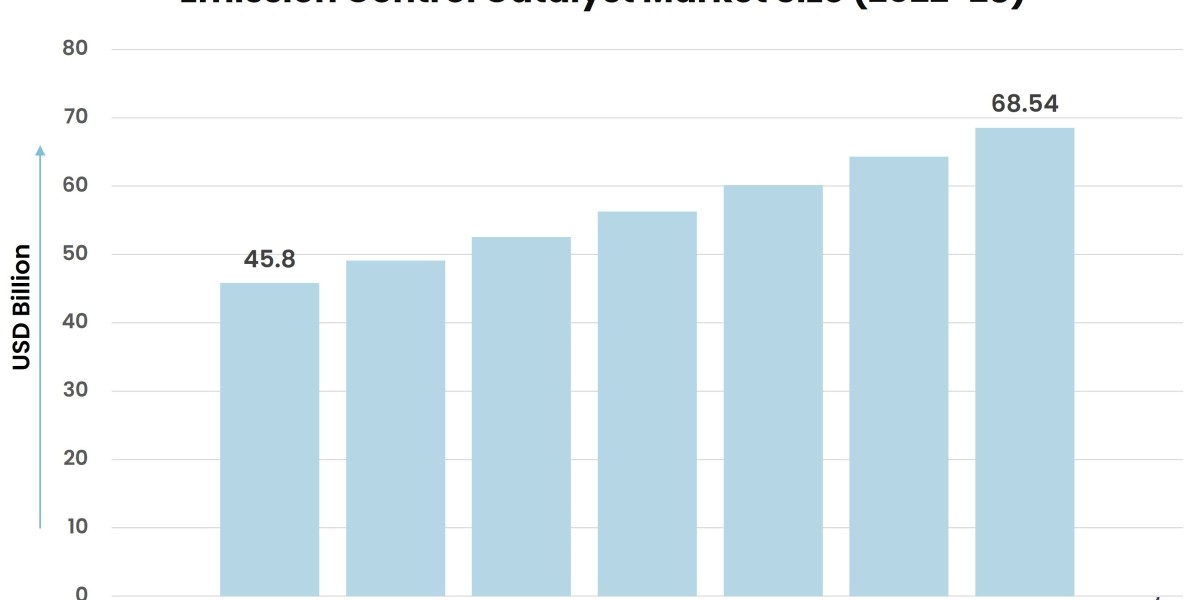The global emission control catalyst market is experiencing significant growth, fueled by a combination of environmental regulations, technological innovations, and evolving industry demands. These catalysts, which help reduce harmful pollutants from industrial and automotive emissions, are vital in achieving global air quality standards. As countries and industries strive to meet increasingly stringent environmental targets, several key drivers are propelling the market forward in 2024 and beyond.
According to Stratview Research, the emission control catalyst market was estimated at USD 45.8 billion in 2022 and is likely to grow at a CAGR of 6.9% during 2023-2028 to reach USD 68.54 billion in 2028.
- Stricter Global Emission Regulations
The most prominent driver of growth in the emission control catalyst market is the enforcement of stricter emissions regulations worldwide. Governments across regions like North America, Europe, and Asia are introducing more rigorous standards for vehicle emissions and industrial discharges. For instance, Europe’s Euro 7 standards and China's National VI regulations demand advanced technology to reduce pollutants, such as nitrogen oxides (NOx), particulate matter (PM), and carbon monoxide (CO). These stringent regulations are compelling industries to adopt emission control catalysts to stay compliant, thus driving strong demand for these products.
- Rising Adoption of Electric and Hybrid Vehicles
While electric vehicles (EVs) are on the rise, hybrid vehicles—which combine internal combustion engines with electric motors—continue to dominate in many markets. Hybrids require advanced emission control technologies to optimize fuel efficiency and reduce emissions. This segment, particularly in developed markets, is a key growth area for emission control catalysts, as hybrid vehicles still depend on traditional catalytic converters to lower harmful emissions. Moreover, as more countries introduce incentives and policies favoring cleaner vehicles, the adoption of hybrid models—and consequently, emission control catalysts—is expected to continue growing.
- Technological Innovations in Catalysts
Technological advancements in catalyst design and materials are significantly contributing to the market's expansion. Manufacturers are investing in new catalyst formulations that improve efficiency while using fewer platinum group metals (PGMs), which are expensive but critical to the catalytic process. These innovations are crucial for reducing production costs and improving the environmental performance of catalytic converters. The development of low-emission catalysts capable of operating at higher temperatures and under more extreme conditions is further expanding their applications across industries like automotive, power generation, and manufacturing.
- Increasing Industrialization and Urbanization
With the rapid pace of industrialization and urbanization, especially in emerging economies, there is a growing need to control emissions from power plants, factories, and refineries. As these countries develop their infrastructure and industrial capabilities, the demand for emission control solutions is skyrocketing. In regions like Asia-Pacific, where industrialization is at its peak, emission control catalysts are in high demand to curb the rise of pollution and meet international environmental standards.
- Environmental Awareness and Corporate Sustainability Goals
Growing awareness around environmental degradation and climate change has made both consumers and corporations increasingly committed to sustainable practices. Companies across sectors are investing in sustainable technologies, including emission control catalysts, to reduce their carbon footprint. This shift towards corporate sustainability is influencing manufacturers to develop eco-friendly solutions that comply with both regulatory and voluntary environmental standards.
Conclusion
The emission control catalyst market is being driven by a mix of regulatory, technological, and societal factors. As governments tighten environmental laws, and industries seek more efficient, cost-effective solutions, demand for these catalysts is expected to continue growing. The future of the market will rely on innovations that balance environmental performance with economic viability, ensuring that emission control catalysts remain central to global efforts to reduce pollution and protect public health.


